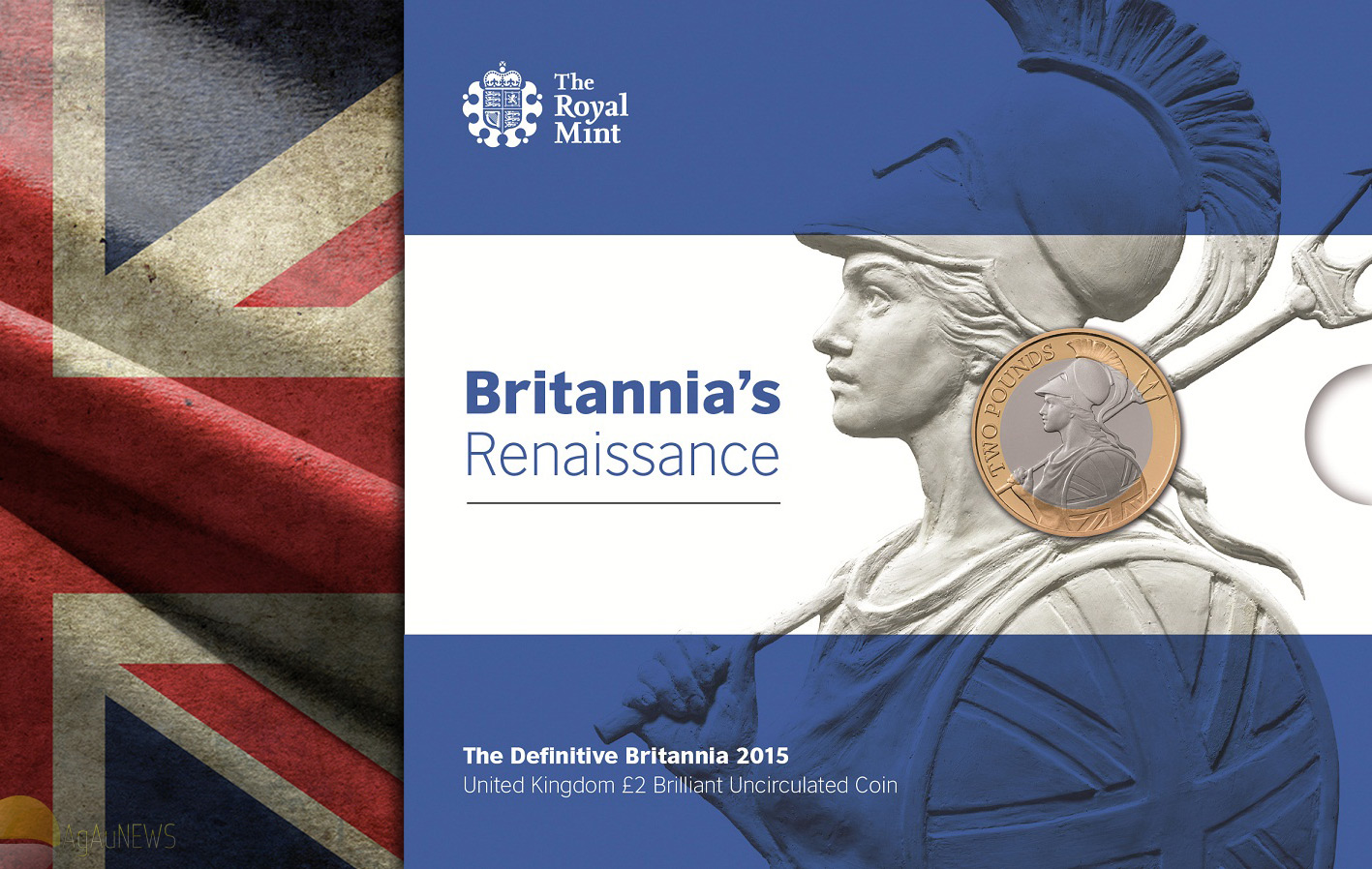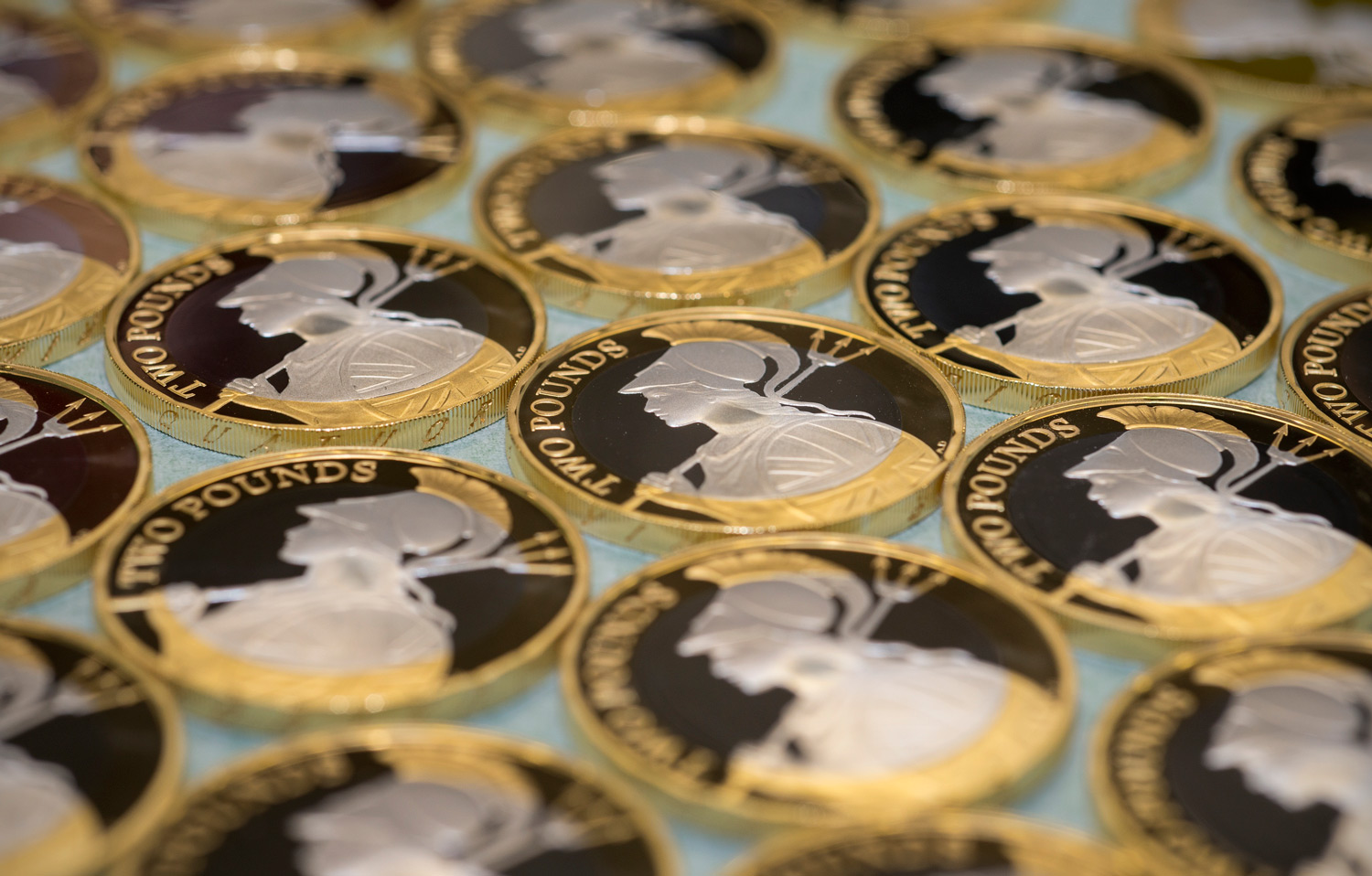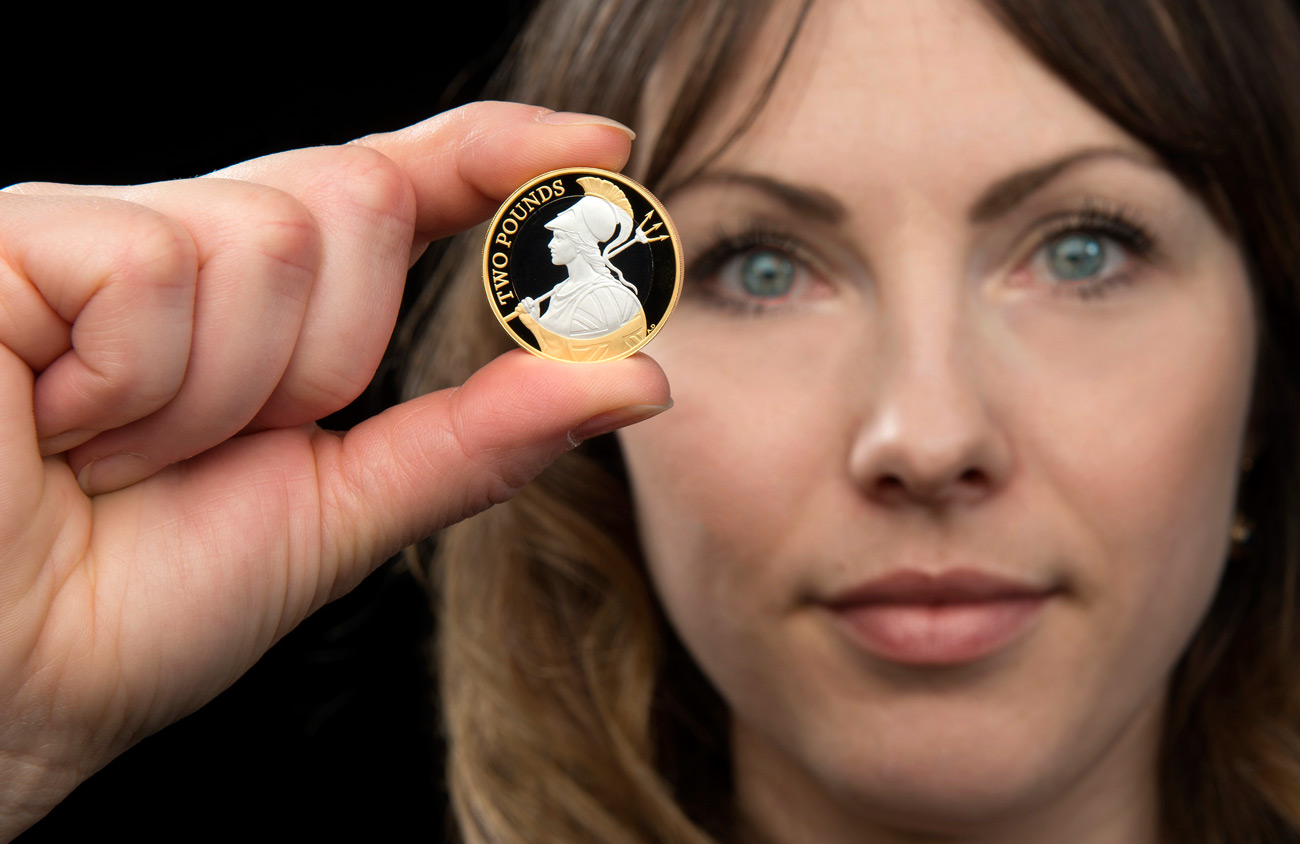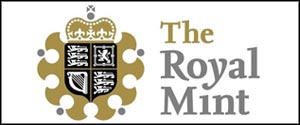After a period of seven years, the Royal Mint’s ultra-iconic Britannia is back on circulating currency in the United Kingdom. Adorning the bi-metallic £2 coin, the highest non-paper denomination in the UK, it coincides nicely with the introduction of the Queens new obverse portrait due to debut this coming Monday.
It’s a fine design, especially considering circulating currency is struck to a far lower standard than the proof coins we usually cover here at AgAuNEWS and that’s the main reason we’re covering this. It’s inevitable that proof versions will be along later this year and hopefully some gold and silver versions, and those are going to look great.
We don’t envy the artist, Antony Dufort, the task of having to design the first Britannia following on from Jody Clark’s awesome 2014 work, but he’s done the business and this doesn’t disappoint, even if it doesn’t reach the same incredible heights (Clark’s Britannia was far and away our favourite coin design of 2014, and we’re not alone I think).
Due to enter circulation later this year, the Royal Mint will offer carded versions on the website from Monday which can be seen above (not the flag), and if past history is any indication, they’ll likely sell for £10.
MINTS DESCRIPTION
The Royal Mint has revealed today that the iconic figure of Britannia will return to rule over the United Kingdom’s circulating coins this year alongside the new coinage portrait of Her Majesty the Queen. It will be the first time that newly minted UK circulating coins have featured the patriotic emblem of Great Britain since she was replaced by the ‘Royal shield of arms design’ on the 50p in 2008, having been an ever present on our coins since 1672.
The new depiction of Britannia will be struck on the UK’s definitive circulating £2 coins, replacing the current ‘technology’ design by Bruce Rushin which has featured on the coin since 1997, giving Britannia the honour of appearing on the UK’s highest denomination circulating coin. The new Britannia £2 coins will begin to enter circulation at some stage during 2015, the same year that the definitive coinage portrait of The Queen will be replaced for the first time since 1998.
Enduring and popular, the image of Britannia in one form or another has appeared on the reverse, or ‘tails’ of coins since the reign of Charles II in 1672.
Christopher Ironside’s seated Britannia had adorned the reverse of the 50p, first issued in 1969 in the run up to decimalisation, until 2008 when more contemporary designs were selected for the reverses of all definitive UK circulating coins from 1p-£1. This new design revealed today has been created by Antony Dufort, an artist who has worked in a variety of disciplines, including portraiture, book illustration, film production and sculpture.
HISTORY OF BRITANNIA ON BRITISH COINAGE
The Four Seas: Pattern Farthing, 1665
Britannia does not appear on British coins until 1672, though pattern pieces dated 1665 exist depicting Britannia with the Latin inscription meaning ‘I claim the four seas’. While the inscription was intended to show the king’s pride and interest in the navy, it was dropped from the official coinage, perhaps to avoid the displeasure of Louis XIV of France. The burning of the English fleet on the River Thames in 1667 also rendered the boast a little empty.
Mrs Stewart’s Face: Halfpenny, 1672
It has long been rumoured that the figure of Britannia which appears on copper coins in 1672 was really that of Frances Stewart, later Duchess of Richmond, who famously spurned the advances of Charles II. The story originates from Samuel Pepys’ comments in his diary regarding the Treaty of Breda medal, from which the coinage likeness of Britannia was taken: “At my goldsmith’s did observe the King’s new medal where in little there is Mrs Stewart’s face as well done as ever I saw any thing in my whole life”.
Maritime Britannia: Two Pence, 1797
The first truly nautical version of Britannia appeared in 1797 when Matthew Boulton’s mint in Birmingham began producing copper two pence and one penny pieces. She now holds a trident instead of a spear, set against the backdrop of the sea, on which there is a three-masted sailing ship. The move to a more nautical version of Britannia is a clear response to the much needed naval victories of the 1790s.
Britannia in Silver: Groat, 1836
In 1836, Britannia appeared for the first time on British silver coins when the groat, or fourpence, was reintroduced to the coinage. It was nicknamed the ‘Joey’ after Joseph Hume, Member of Parliament for Middlesex, who was thought to have been primarily responsible for its reintroduction, in order to simplify the payment of cab drivers, as the Hackney fare for a half-mile in London cost fourpence.
Ship and Lighthouse: Penny, 1860
From 1860, two popular features associated with the Britannia design on the penny are the ship and the lighthouse. Both were removed in 1895 when the reverse of the penny was remodelled to make Britannia rather larger, a decision which would prove to be controversial with the public and attract a degree of unfavourable comment including ridicule in the magazine Punch.
Britannia Standing: Florin, 1902
For the new florins of Edward VII, issued in 1902, the talented Royal Mint engraver George William De Saulles produced an unusual design of Britannia standing on the prow of a warship. The purpose of the design, apart from its pleasing aesthetic appearance, was to make the florin more distinctive from the half-crown, which it closely resembled in size and weight.
Lighthouse Restored: Penny, 1937
With the death of George V and the accession of Edward VIII, an opportunity arose to consider the restoration of the lighthouse and the ship in the background behind Britannia. Although the lighthouse was once again successfully added to the design, trials showed that there was insufficient space to include the ship.
ANTONY DUFORT, DESIGNER
“I am used to creating over life-sized models so working within the constraints of the 5mm thickness of the coin was a totally new experience. But I have collected coins and this helped in considering my design; for example, Britannia’s helmet and trident fill one side of the coin, while the inscription balances this on the other.
Britannia has taken so many forms and been presented with such a variety of symbolic elements, I looked to Greek and Roman coins and statues to ensure authenticity while modelling her trident and Corinthian helmet. However, I feel I have balanced these classic elements with clean, elegant lines for a contemporary-feeling composition. My coin design fills me with a similar sense of pride as these coins will be used and hopefully enjoyed by the public.”
Britannia Saved: Fifty Pence, 1969
The figure of Britannia was so popular with the public that the decision in the 1960s not to include her on the new decimal coins created an outcry. Such was the strength of feeling that she was subsequently placed on the new fifty pence piece which was first issued in 1969.
Britannia’s Renaissance: The Definitive Britannia 2015 United Kingdom £2 Brilliant Uncirculated Coin
“Britannia has been presented with such a variety of symbolic elements, I looked to Greek and Roman coins and statues to ensure authenticity while modelling her trident and Corinthian helmet. The works I have enjoyed creating most are those for the public. They feel like they have a real value. My coin design fills me with a similar sense of pride as these coins will be used by the public.”









Hi Mik,
I heard about this earlier today from the Mint, but the way I read it this design is only for the circulating 2 pound coin, which is also being stuck in collector versions in silver, gold, etc. In other words, there will still be a different design for the silver and gold proof sets and coins that are issued during the summer. Is that also your understanding? Thanks, Louis
Yes it is. This isn’t the actual 2015 Britannia proof range design as far as I’m aware.
Thanks, Mik